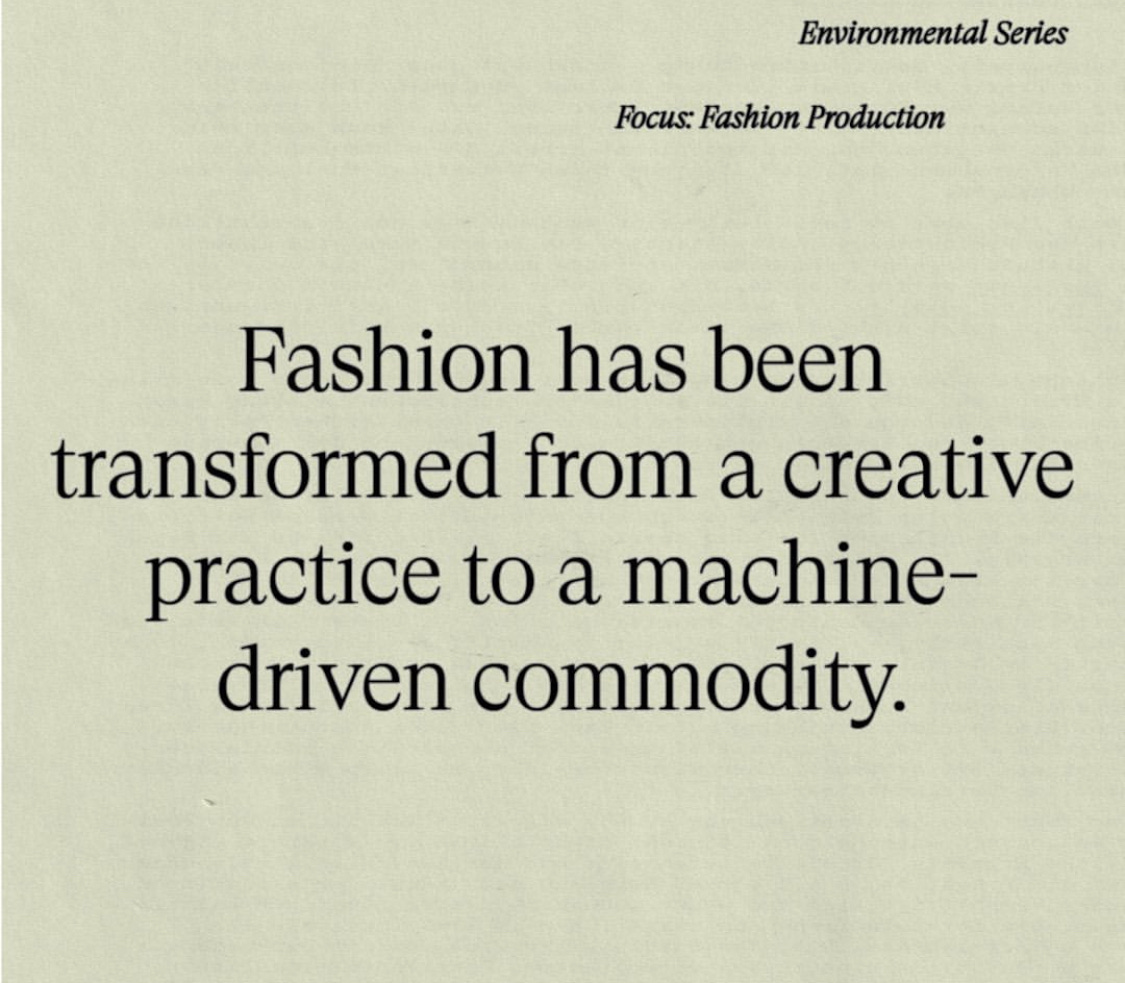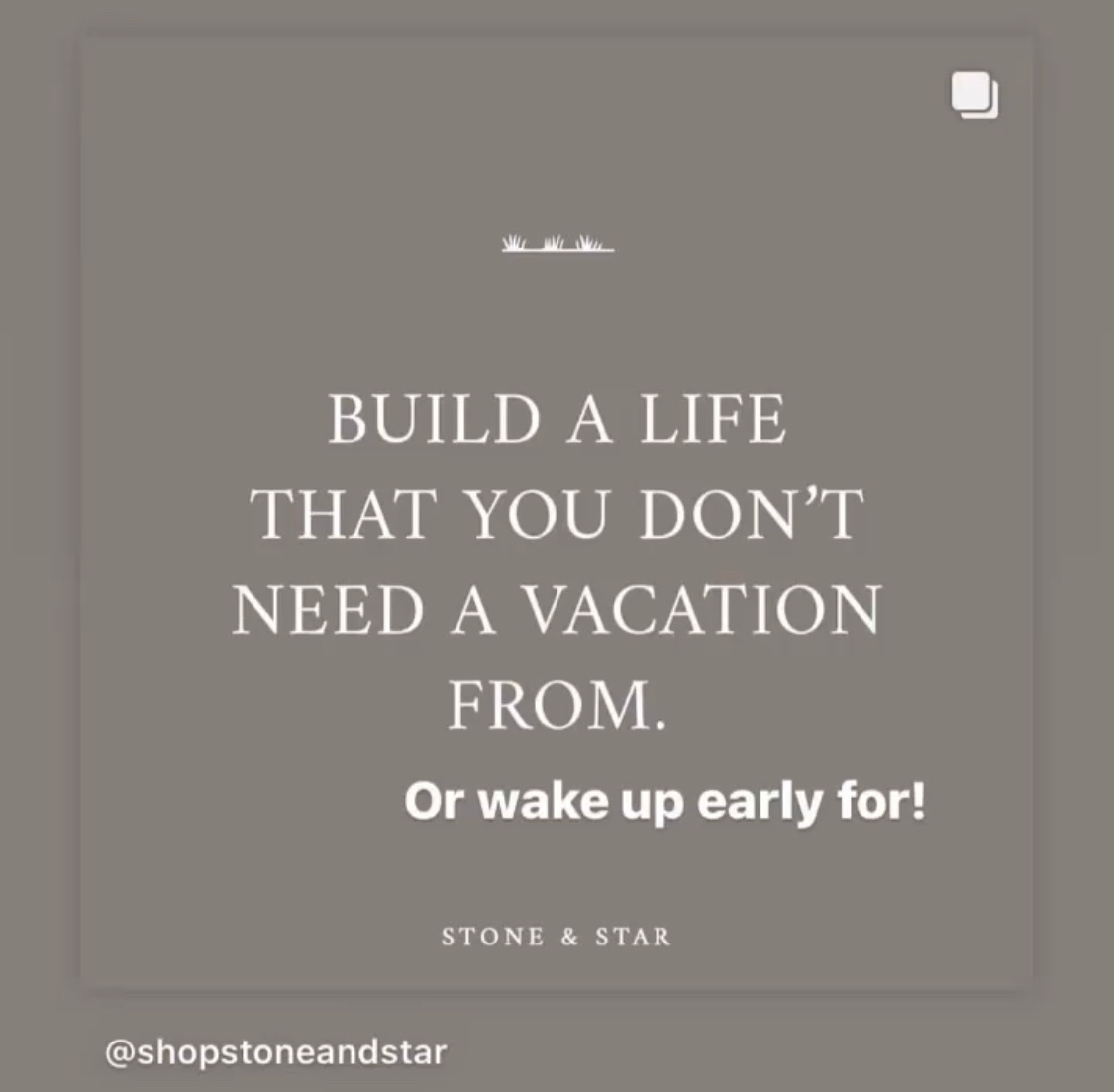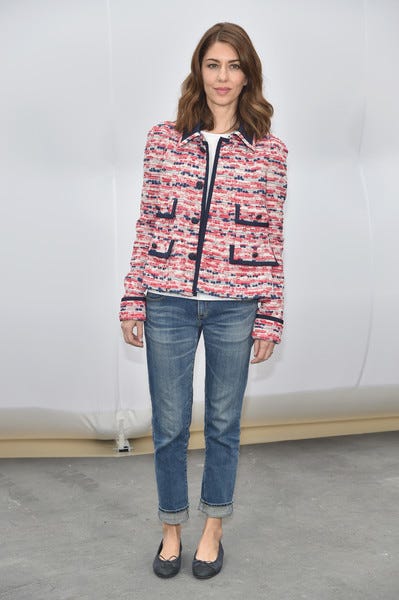What is True Luxury?
“Luxury is not consumerism. It is educating the eyes to see that special quality.” - Christian Louboutin

I find myself less and less excited about fashion, and can’t think of anything I want to shop for these days. Some things and people still do stand out and get my attention, such as
sustainability issues in fashion (I’ve enrolled in continuing education courses on sustainability so I’ve been doing quite a bit of reading. In a nutshell, the situation is dire but not hopeless - if I am being optimistic, and definitely needs the attention and cooperation of every person in the planet - okay, maybe I am being optimistic),
real street style accounts on Instagram like @milanesiamilano, @newyorkersintheirjungle, @parisiensinparis and,
the Japanese and Korean women such @hiroko.iwabuchi and @elborn_doris who do masterful layering and put together such chic, wearable outfits.
I’m bored about Fashion Week all over, as well as the run of the mill personal style posts on social media. It’s like I’ve shifted and I’m on a different timeline, and I can no longer relate to what mainstream fashion stands for.
Trend wise, for those in the so-called Global North, everyone mostly looks the same. Is it me or is it the algorithms? I’ve been bombarded with various iterations of oversized blazers, vests, loose trousers, 90s straight leg jeans, Celine Triomphe belts, it looks like they are wearing some kind of uniform for “women who are in their 20s-30s and want to look modern and now”. Plus, don’t get me started on Y2K fashion. The cringe is still fresh on that one. It’s the novelty I suppose that is appealing to Gen Z. The same way the low waist jeans and chunky shoes and block heels of the 70s appealed to me back in the 90s and my Mom was like, “Why?”. To think her bellbottom pants and wooden clog sandals worn during her youth were my inspiration.
So today, I thought I’d talk about the changing concept of luxury instead. It has evolved so much from how it was perceived back in the 90s.
In 1997, while on the Eurostar on my way to Paris, a girl not much older than me sat a row ahead and she was dressed immaculately in a white button down shirt and blue jeans, an Hermes scarf wrapped around her neck. As she stood up to get her luggage, she pulled out a Louis Vuitton carry all and I distinctly recall she was the only person in the train at the time to be using such fancy accessories. Let’s face it, she was unforgettable to an aspirational 21 year old me who could not only afford to buy these things of beauty with my allowance, but also did not have the imagination then to believe I could wear them at my age. I thought they were for elegant older women who were heiresses, made their own money, or married well. In fact, my theory then was, the girl was an heiress. How else could she have afforded luxury at such a young age?
These days however, luxury is conspicuously ubiquitous. It’s everywhere and it is not uncommon to see toddlers wearing Gucci or Dior. I bet if you ride the Eurostar now, every row would have someone using a nylon Prada backpack or chunky Balenciaga sneakers. Luxury isn’t the bastion of a select few anymore, which is actually a good thing. All the street style accounts all over the world that I’ve mentioned above, show how luxury is worn like a cotton t-shirt. It’s for every day, for going about your day. Which is great, we all deserve to afford and use well-made clothes, shoes and accessories.
Along with it however, is the change in people’s perception of luxury. What used to be rare or extravagant is now not just accessible, but also commercialized and expected. Which for many, is the opposite of what luxury stands for.
According to Pam Danziger for Robin Report, findings from Unity Marketing’s State of Luxury show that “The traditional meaning of luxury is under threat” and the industry is at a crossroads on how to proceed.
“Over the five-year history of our luxury insiders’ survey, one concern keeps cropping up among respondents: The traditional meaning of luxury is under threat. As a new generation of affluent consumers has emerged globally, the old ideas of luxury seem to have less meaning and relevance, and it caused the industry to question how to move forward.”
Is this entirely a bad thing? For “luxury to have lost its luster” as Dana Thomas famously put in her book, Deluxe?
A respondent to the study, one of 500 luxury industry insiders made up of luxury goods and services executives, as well as advertising and marketing agencies that serve luxury brands, was quoted to have said, ”We need to reinterpret luxury from labels and conspicuous consumption to a quest for goods and services that are personal, authentic and unique.”
I get what that person means. The average person thinks of luxury not as a standard for quality or a potential heirloom, but a means to signal affluence, spelled out in logos - those instantly recognizable letters on stuff that celebrities and influencers wear. Luxury has become a trophy of sorts, and the logos tell you which place that person is at.
Gucci is Rockstar Royalty.
Dior is saying “I can afford it, and I like that people know.” I mean, what else does a $3500 small book tote made out of canvas, granted it has embroidery, say? (The runway clothes that have nothing to do with logos though, show the utmost refinement.)
Chanel attracts both the chic, traditional types who have grown up seeing the women in their family wear Chanel, as well as those who now have money and want to buy into the brand’s timeless appeal and history. Now the history has some skeletons in there, I mean if Coco Chanel were alive today, she’d be cancelled like Dolce & Gabbana, and will bounce back anyway. But that again, is a topic for another day. (The topic pipeline is growing!)
Hermes in general is still quiet luxury. There are plenty who use it as a status symbol, and it does say you’re at the head of the pack, and in fairness to Hermes, the quality is beyond reproach. It helps that they have remained privately held and continue to value refinement, tradition and craftsmanship as they have generations before them.
This is because real luxury is less about logos and more about the product and the artisans who make them, not the celebrity associations. Or as Jean-Louis Dumas, fifth generation of the Hermès family and head of the family owned company from 1978-2006 famously told Vanity Fair, "We don't have a policy of image, we have a policy of product." In fact, it is is mentioned in the article that he dismisses their brand’s association with “luxury”,
“…disliking its arrogance, its hint of decadence. He preferred the word "refinement," and intrinsic to that refinement is what Hermès won't do. It does not boast, does not use celebrities in advertising, does not license its name, does not let imperfect work leave the atelier (imperfect work is destroyed), does not get its head turned by trends. What it does do—Dumas's "policy of product"—is create necessary objects made from the most beautiful materials on earth, each so intelligently designed and deeply well made it transcends fashion (which is good because the pieces last for generations). “
And this is what people need to understand. Luxury is more like logo-less Phoebe Philo-era Céline, Moynat and Bottega Veneta. They don’t rely on celebrities to tell you it’s luxury. Anyone with an understanding of refinement in materials and craftsmanship can tell with just one look. Those who appreciate them have the eyes that have been educated to see the special quality, as Christian Louboutin defines luxury.

An exception to the above would be The Row, given the Olsens’ Hollywood background, but Mary Kate and Ashley have refined their eye to a point that their taste is simply flawless and The Row has become the go-to for women post Phoebe Philo leaving Céline.
Luxury is also an attitude and a state of mind. Wearing Hermes doesn’t automatically make a person elegant and refined. A person who has refined his thinking has his priorities in line, and knows that health is wealth. Think of someone who uses refined things but doesn’t spend money on her child for dental treatments. If your kid’s baby teeth have rotted to a point that the enamel had worn down, every bit of tooth black and decayed and you can afford to buy “luxury”, where is the luxury in that? How we treat others and where we spend our money on, says a lot about our real character and motivations.
Years ago, a friend told me she once tagged along as a “plus one” to a French house’s VIP event (she could have been a VIP herself if she were a fan of the brand, but it wasn’t her style, she was just curious about what the experience would be like) and was surprised to see the VIPs were nothing like the women she imagined luxury consumers to be. Let’s put it this way, people with serious money tend to be super low key, you wouldn’t even notice them and that’s how they like it. Anonymity is luxury.
They also know that education is luxury. It’s not just about schools but the books we read, the podcasts we listen to, the knowledge, information and doors we have access to, and the company we keep. Who we spend time with and who we interact with also says a lot about what we value and is indicative of where we will go in life. To be able to see a good thing in front of you, even if common knowledge tells you otherwise, is a luxury afforded to a very few.
Of course, time has long been considered the ultimate luxury. To be able to do what you want when you want, without having to answer to anyone, is truly a luxury.

If you want to go to Spain now, buy a house and stay there for two years, working remotely while the kids go to an International School or an excellent local school as you wait to get a Spanish passport, I mean, could there be a better example?
Luxury is also found in the every day, and to have the frame of mind to understand and appreciate that, is one of life’s greatest luxuries.
To enjoy a sweet and juicy mango, in season and freshly harvested from Zambales is a luxurious treat. To use Le Labo or Aesop hand soaps in your own bathroom and not just put on display at the rarely used guest powder room is a luxury. To wear a finely hand embroidered Chikankari cotton tunic by Asya by Ambika as your nightgown is a luxury. To have a pair of Birkenstocks for inside the home, and another pair of Birkenstocks for outside use, is a luxury. To enjoy a freshly pulled espresso in that fancy Delonghi coffee machine, is a luxury. And if I have to stress this - to have good teeth, to spend on regular health checks - be it physical or mental, is a non-negotiable to someone who believes in cultivating life’s pleasures.
Everyday luxuries are NOT an appeasement or a bridge to tide you over the next big ticket purchase. And this is what people need to realize, to live in luxury is to transcend the ordinary in every aspect of your life as you see fit.
Dr. Martina Olbert, founder of Meaning.Global, an expert on brand meaning and author of The Luxury Report, tells Forbes,
"Luxury is about transcendence. It has the divinity element to it that transcends the present moment and through the beauty and perfection of both its form and essence transports you somewhere else, to a higher state that uplifts your spirit,”
“Luxury when done the right way is a deeply spiritual practice and experience because it’s meant to connect us to the deeper parts of ourselves, instead of being determined by the social meaning that we gain through others. Luxury objects should be spiritual objects for everyday use in everyday life. That’s why they’re full of meaning.”
This is what luxury brands need to realize. “The real power for brands can be found in empowering customers to live their own authentic lives.” It’s not about selling them an aspirational life that has nothing to do with their everyday realities.
Or as Dr. Olbert puts it, “Authenticity is becoming the new luxury.”






